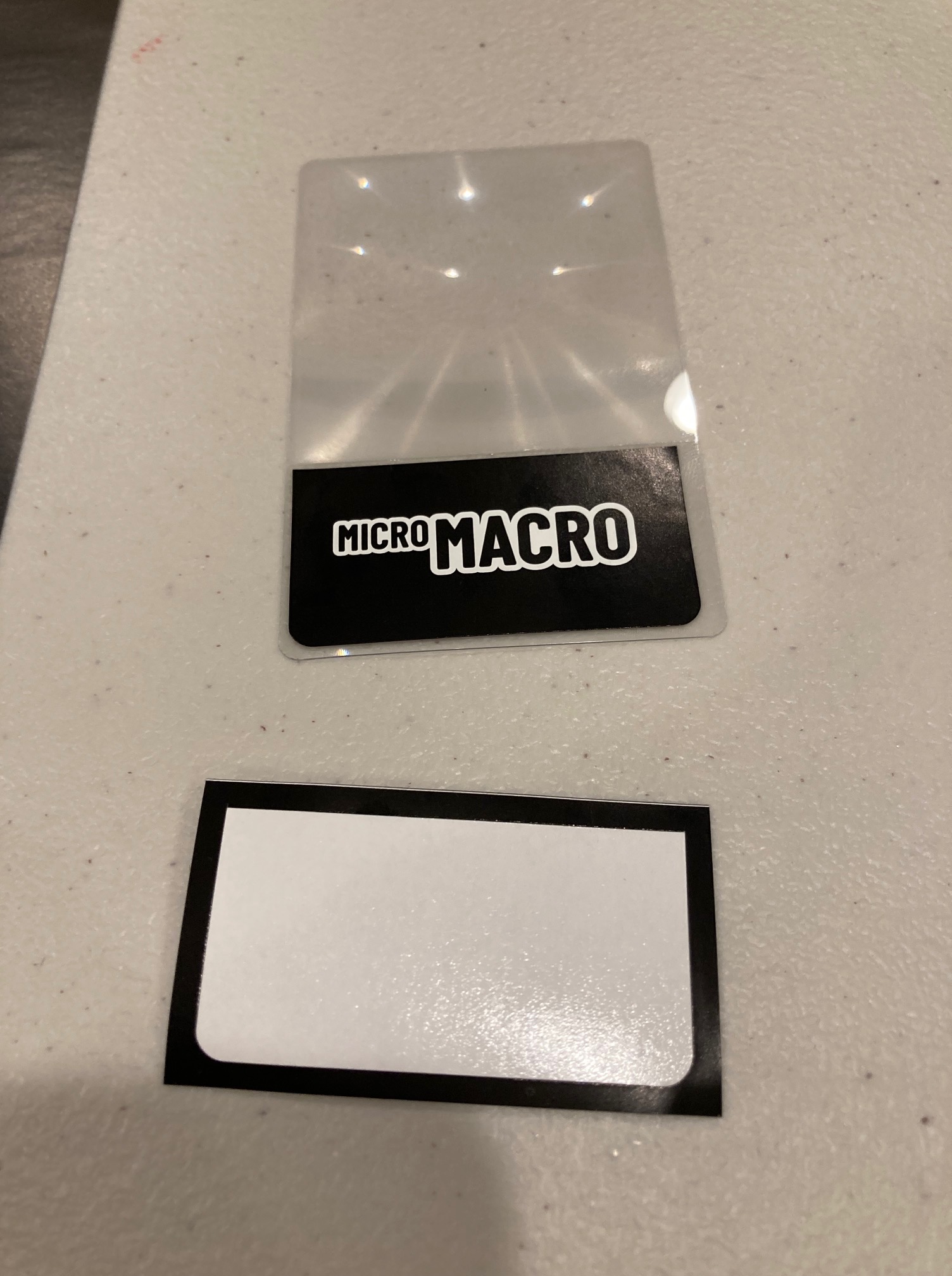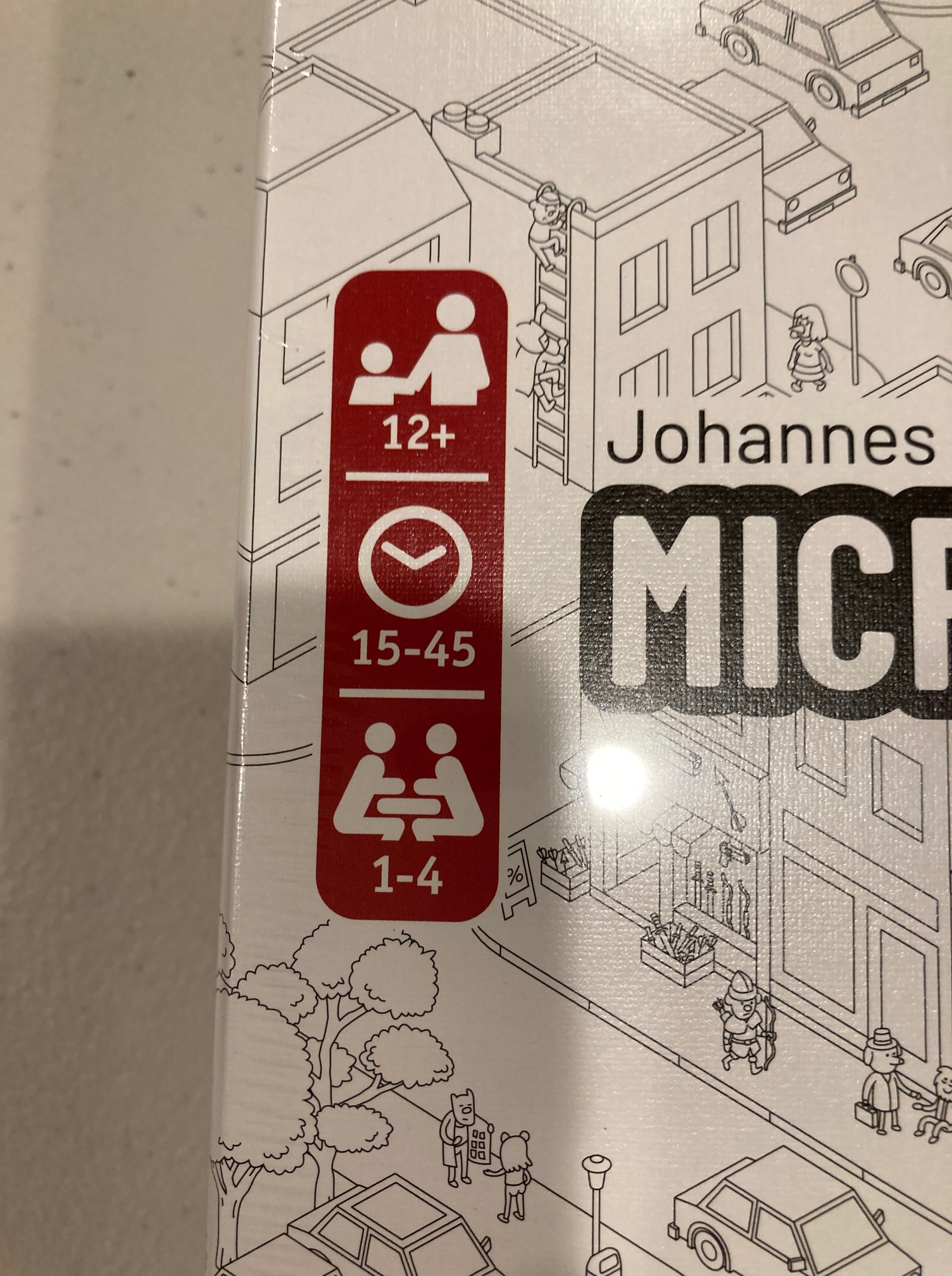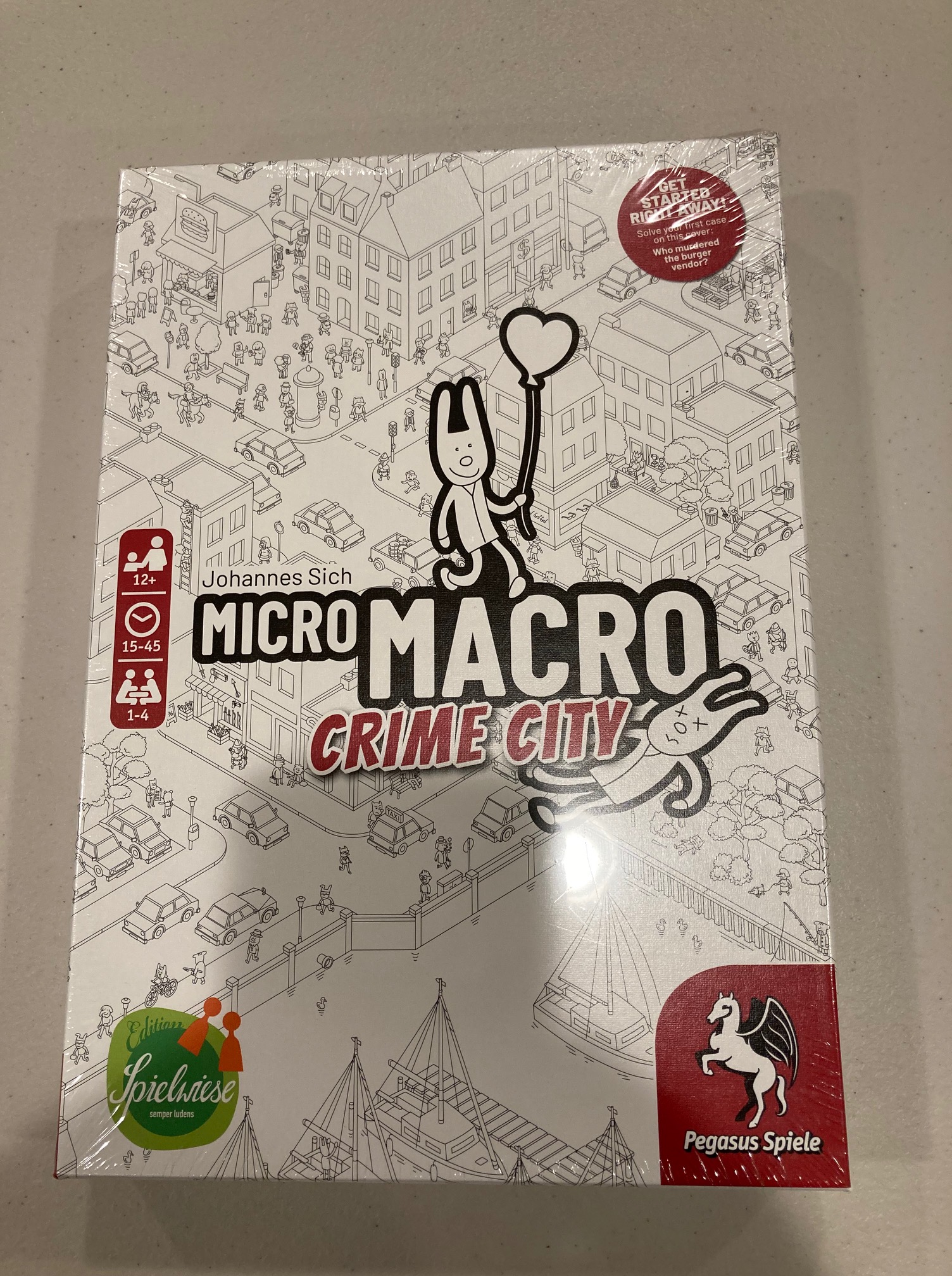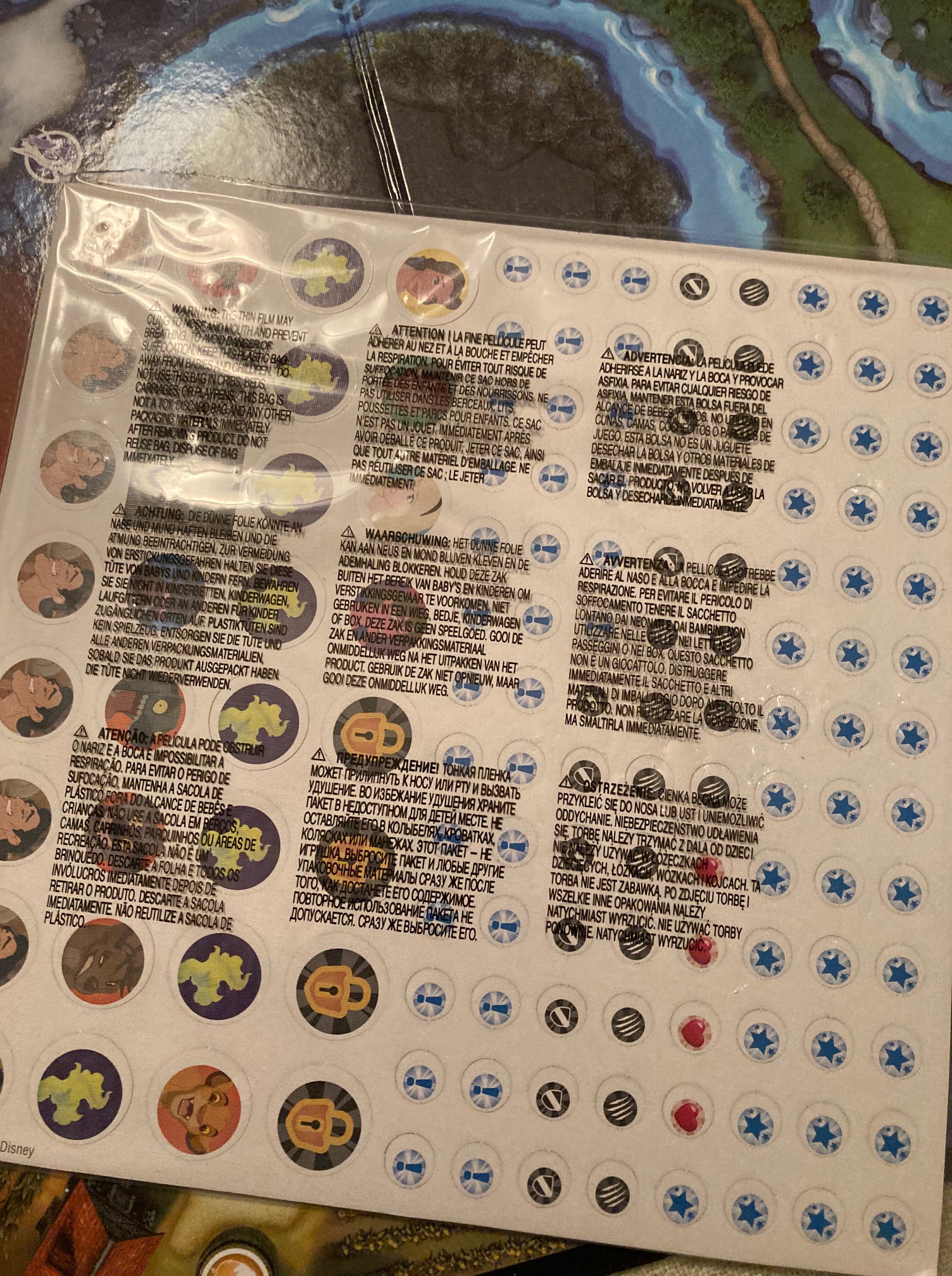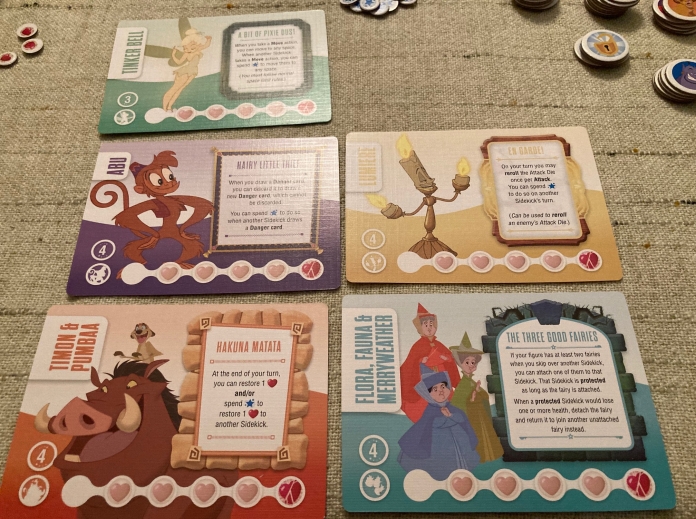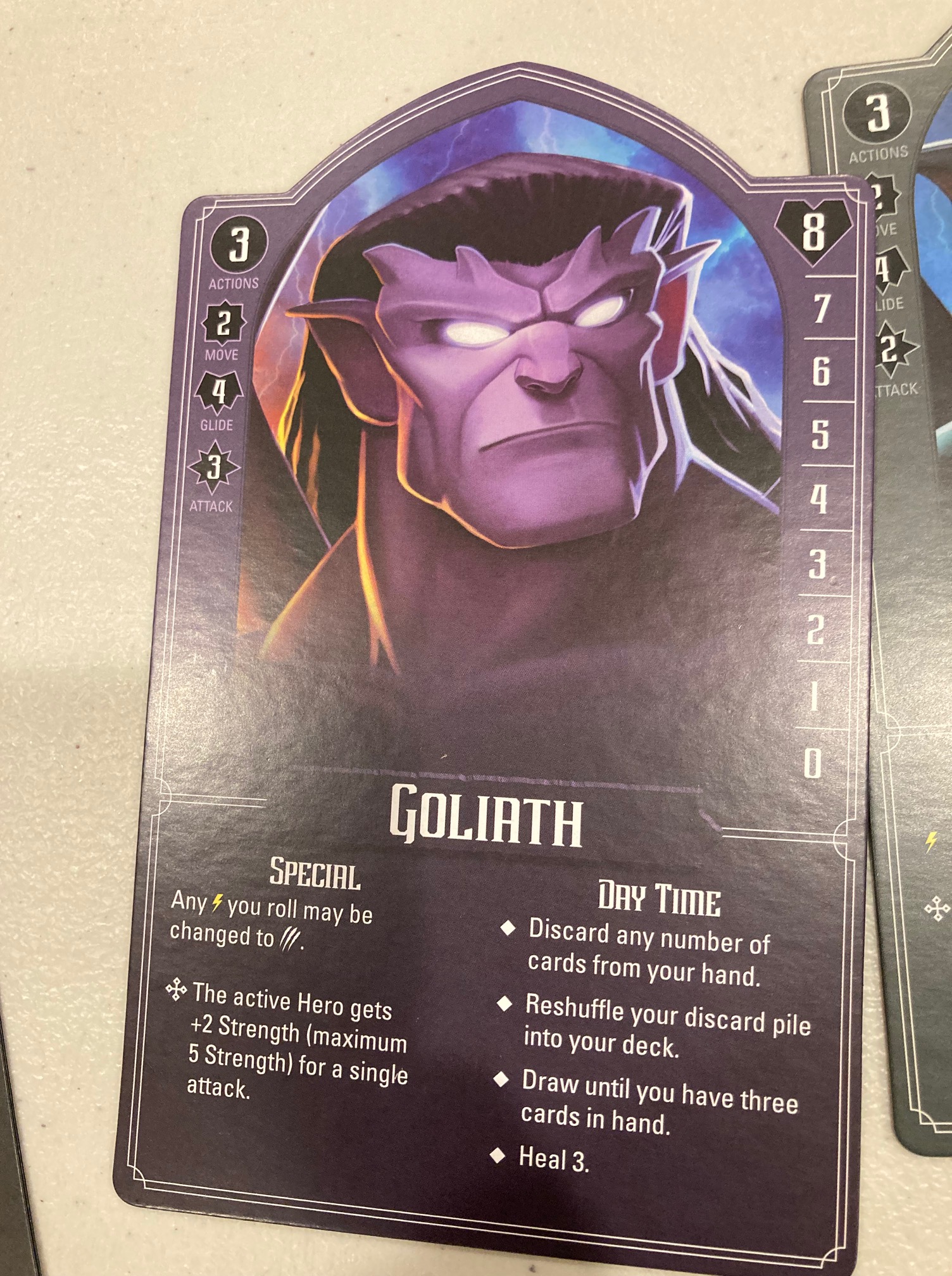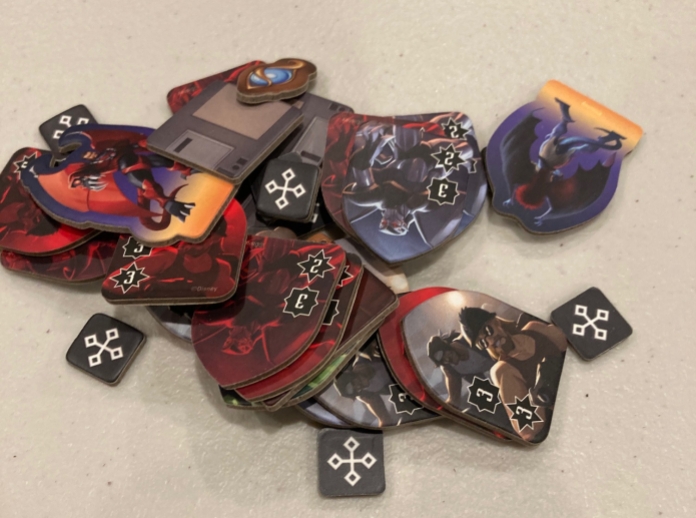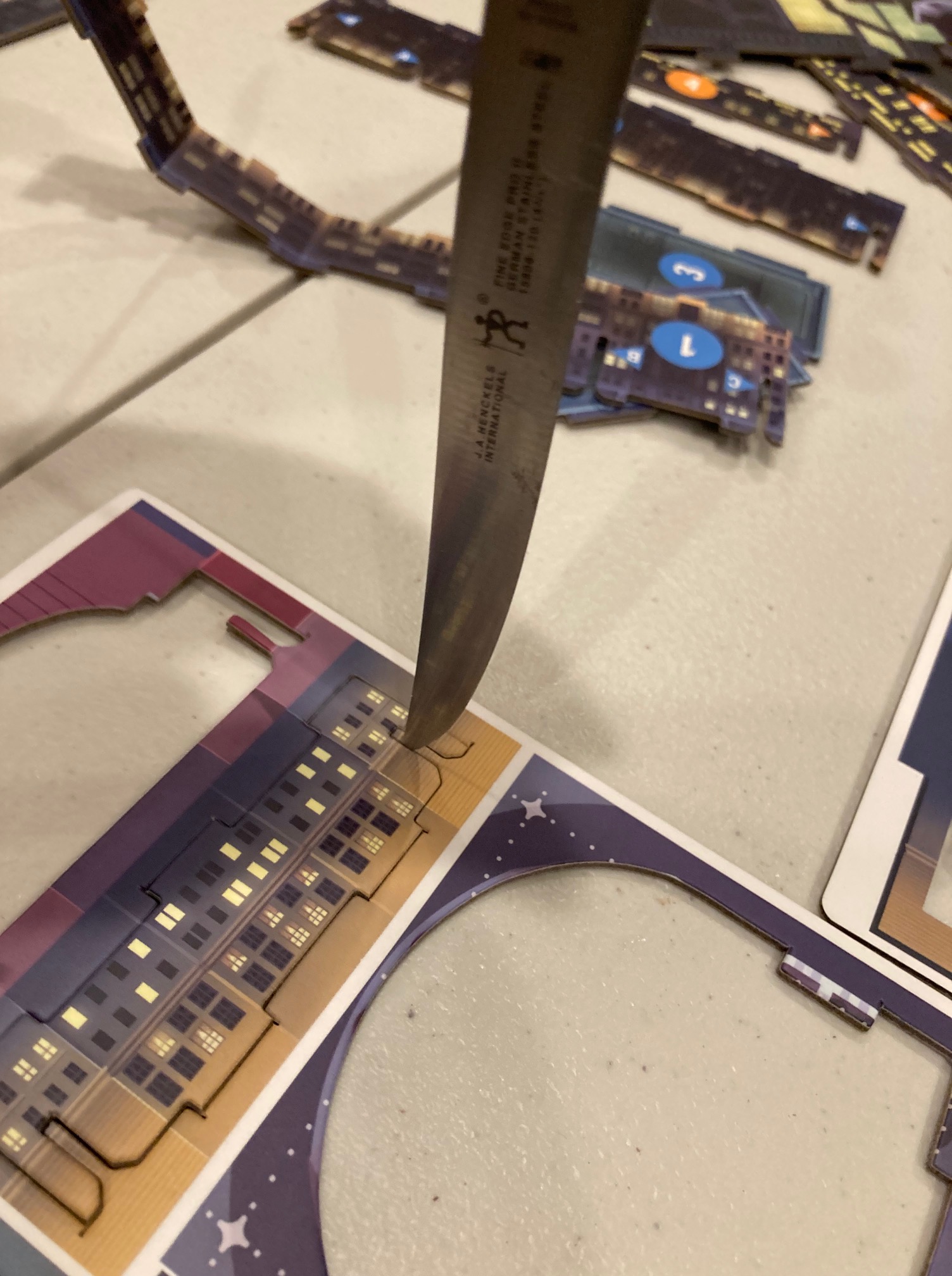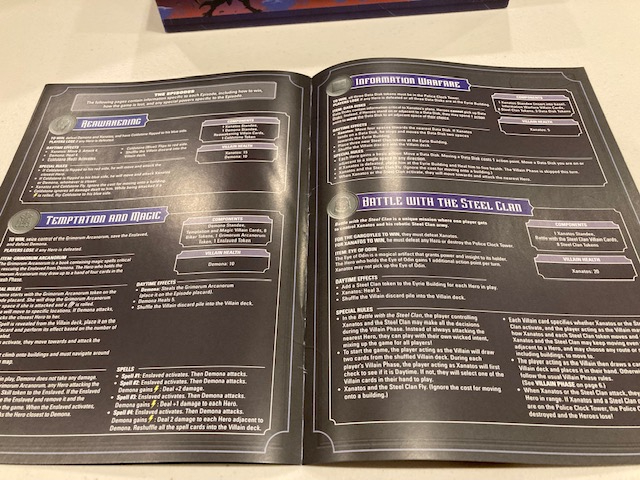
Intrepid is a cooperative dice placement game for 1-4 players from Uproarious games. Players work together to keep the International Space Station running! (Well, it may not be licensed officially from the ISS, but it’s pretty clear that’s the vibe). I kickstarted Intrepid back in July 9th, 2020, and it delivered to me about a week ago as of August 27, 2021. It promised delivery in March 2021, but given the current state of shipping, COVID, and the fact that “it’s a Kickstarter”, 6 months late is really not bad.

Intrepid impressed me by HOW BIG the game box was! I tried to put a coke can up for reference, but it doesn’t really show how THICK the box is, so see below!

It’s thick and heavy! I vaguely remember this Kickstarter felt “smaller” when I backed it, but this was a bit of a monster box! I was actually quite excited to get this out! I played as soon as possible, both solo and with my gaming group.
Unboxing
The box art is absolutely beautiful. That cover is haunting. (It also most reminds me of the Comic Book Artist Alan Davis back when we was doing X-Men and Excalibur). And this is a heavy, thick, box.
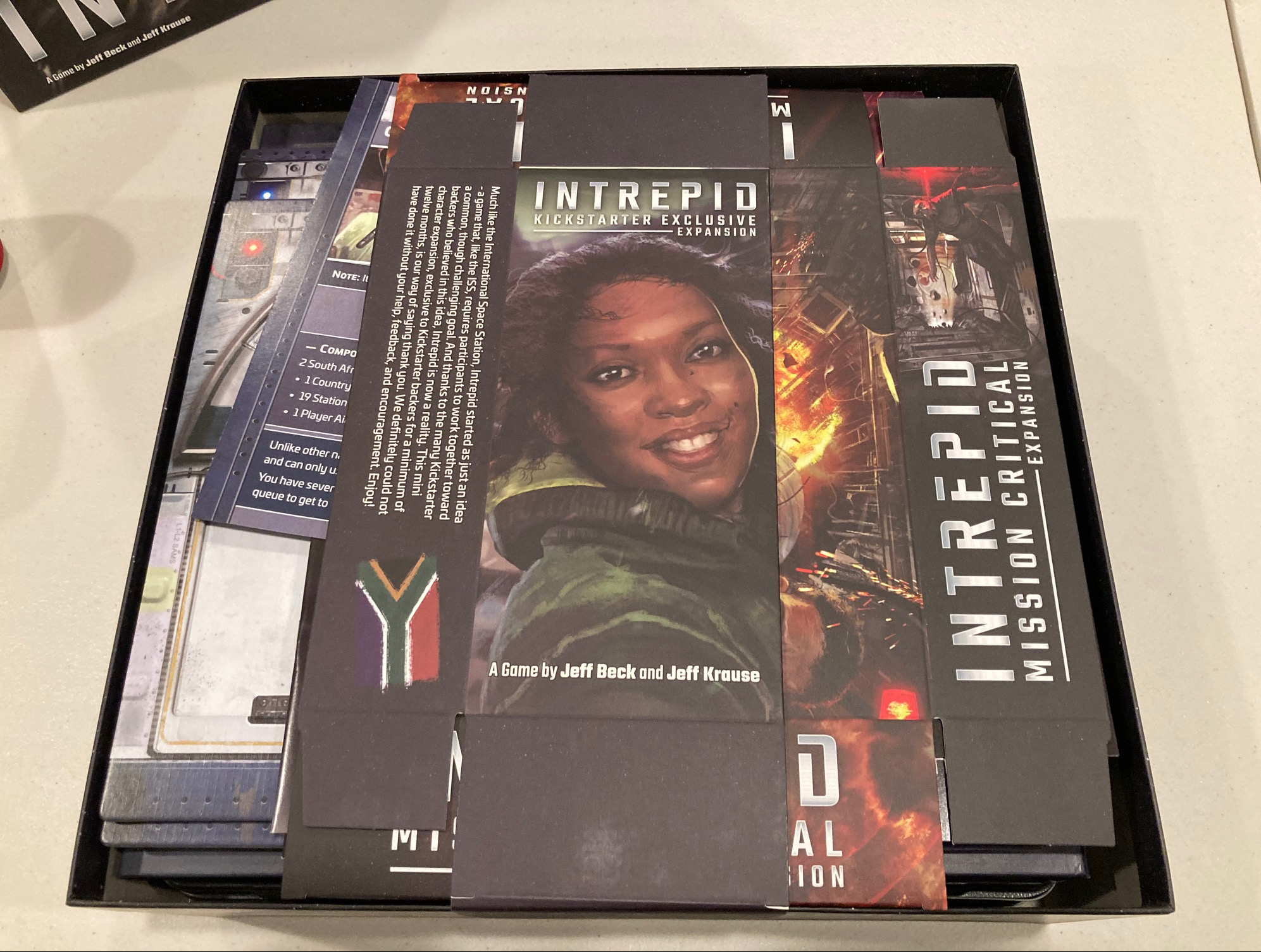
Opening this up, you can see that it’s stacked to the breaking point with stuff! They were very generous in the Kickstarter. There was only one pledge level for $60 and I got two extra expansions (see them squished into the box as flat boxes above). I normally don’t talk about price (partly because it’s embarssing how much I spend, and partly because it doesn’t matter on whether the game is good), but the amount of content I got with this box is phenomenal. Keep unboxing with us…
The first expansion (see above), Mission Critical, and some Kickstarter “extra” expansion is at the top of the box. To be clear, only the flattened BOXES and rulebooks for the expansions are at the top of the box. The different characters and other tokens from the expansions are all packed below this. Uproarious games made a concerted effort to make sure everything could fit in this box: expansions and everything!!! It all fits (barely) in the box!

You can see the expansion boxes a little closer above. The expansions are really just more cards and countries.
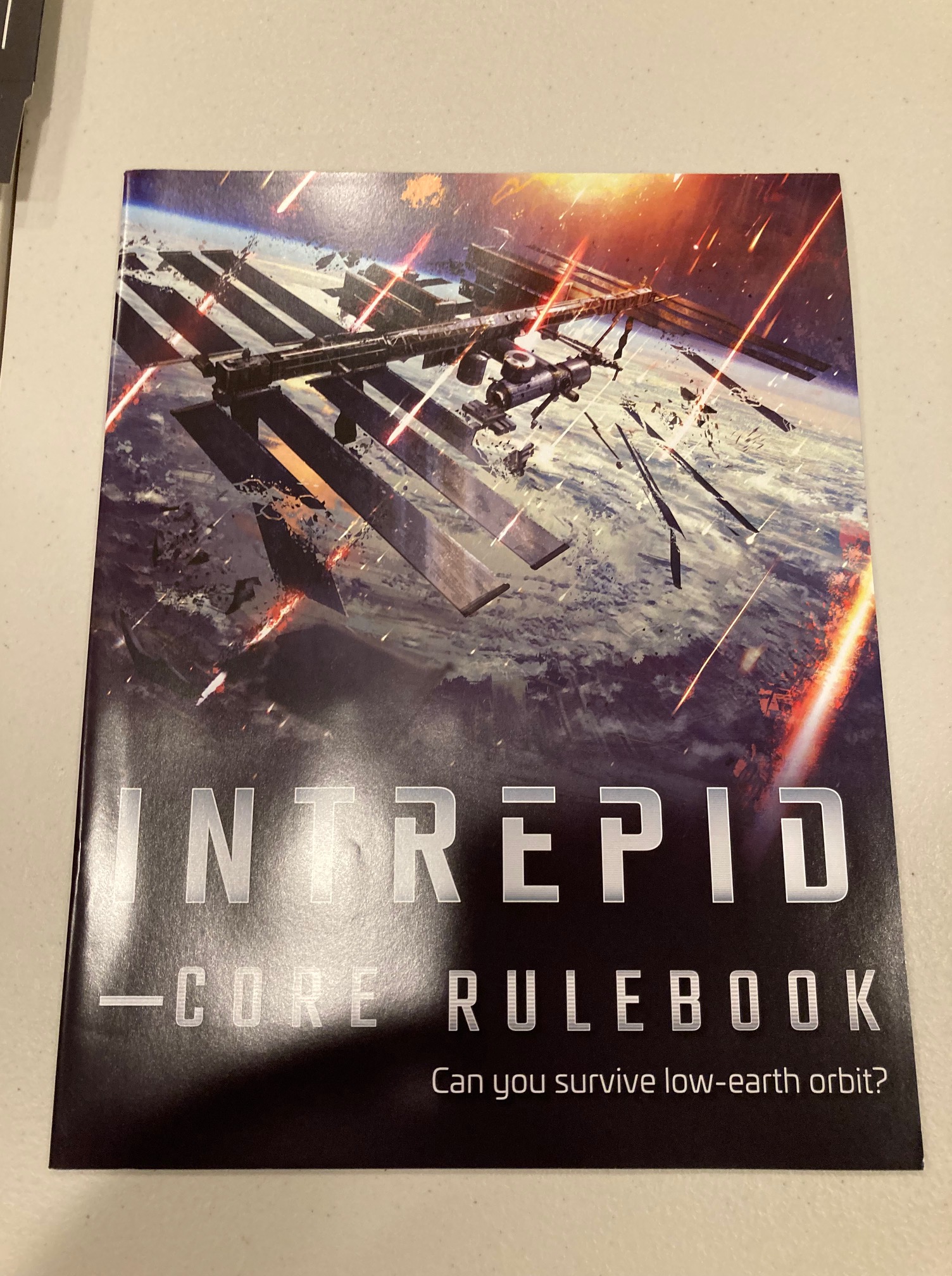
The rulebook (see above) is gorgeous: we’ll take a further look at it below.

The next thing under the rulebook are the resource boards! There are 4 really nice resource boards with plastic windows and a giant spinner. I was blown away when I saw the quality of these components!

Check out that board: it’s also dual-layer on the right as well as a cardboard inlay for your country and role (the big empty space): your country and role will slot in there:

Just amazing components … and more coming!

There’s come cardboard tokens: easy to punchout and read.

Next is the board: it’s HUGE! I put the Coke Can and laptop and player board next to it to give a sense of how huge it is! It’s also got plenty of 3D plastic goodness so you can slide tiles in there.

Below the board are the next big components: the Gametrayz holding each of the 10 different countries! I think the base game comes with 5 and the two expansions move that up to 10 countries total!! Each player takes a country and plays that country throughout the game. What’s in the Gametrayz?
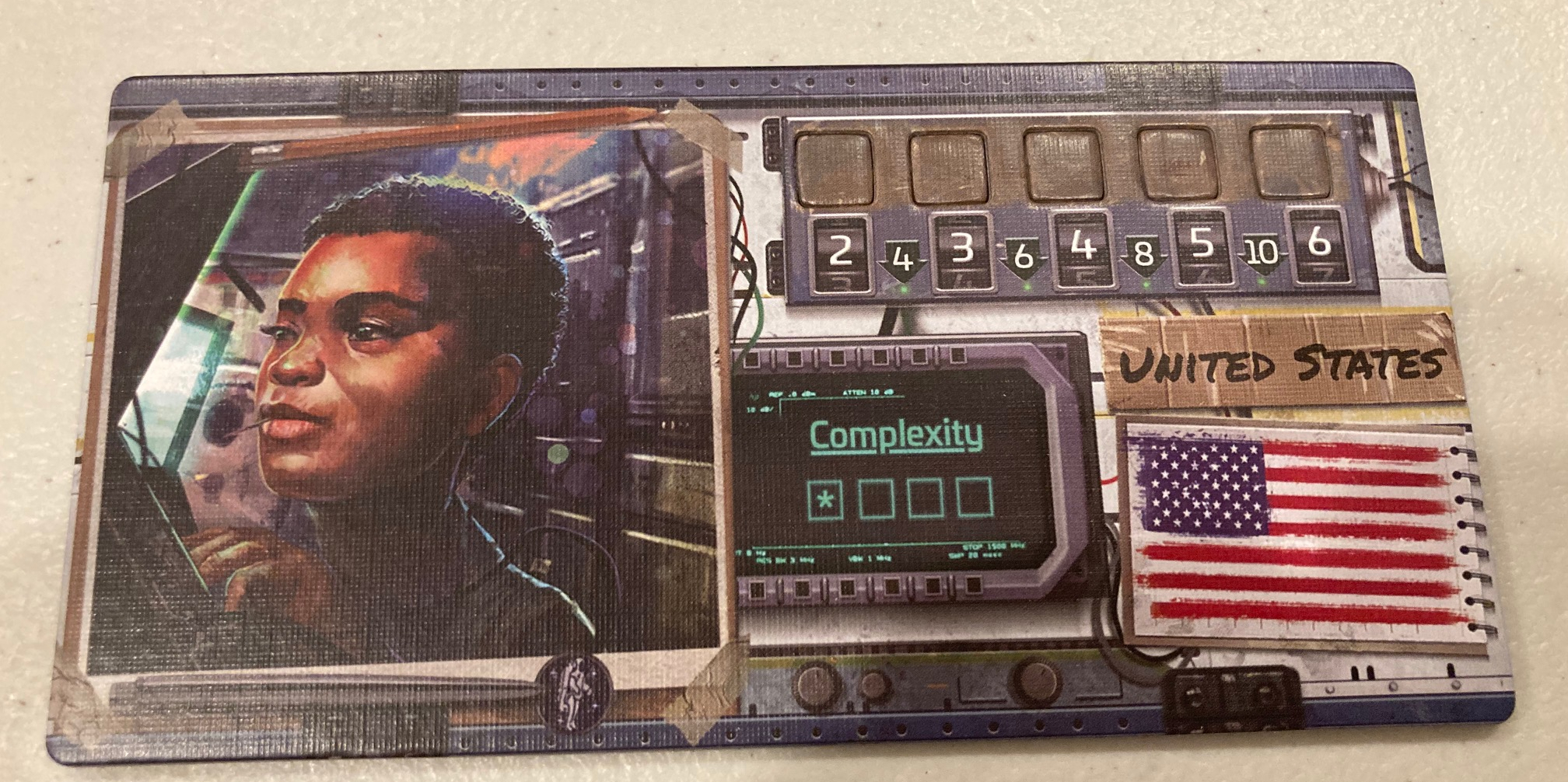
First you get board to “plug in” (it’s thick cardboard) into a resource tray. You also get a bunch of tiles (19: 3 starters, 4 Tier 1, 4 Tier 2, 4 Tier 3).

Notice the font on the tiles is VERY BIG AND READABLE. Thank you for that!! I am so tired of tiny fonts.

Once you know how the game works (by the end of your first round of your solo game), you’ll also appreciate how easy the iconography and layout facilitate the tiles purpose.

In the BOOST tile above, you need two dice to activate it. When you activate it, you take the benefit (lower left). If the tile has been activated, you’ll get the resources (lower right) in the “gather resources” phase. That little blue light in the upper left will be important too. You can probably also guess that Tier1, Tier2, etc. are tiles you can buy as the game progresses. And you’d be absolutely right!

And we’re still looking at components! The dice are very nice 6-sided dice in their own little trays (with some cubes each player needs). It’s a pretty cool storage solution actually.

Intrepid has variable player powers: you can choose your “career badge” to place in your resource board (see above). Another 4 (not shown) are included for some more variety.
Below the dice are all the cards. The above are the Bad News cards (all cooperative games have to have a Bad News deck, right?) Notice how well they are marked for difficulty (green to red) and how beautiful the art is!

The cards are also linen-finished. The lower right cards are the “mission cards”: you need to complete 3 missions to win the game.

Overall, the components for this game are FANTASTIC!!! I was so blown away when I was opening this up. I paid $60 for this??? This is an amazing deal! I was in a little honeymoon period after I opened this up: I was just so happy at how pretty it looked and how much stuff I got! Everything is readable and intuitive, and it looks beautiful.
The Rulebook

The rulebook is nice and big: see below for a Coke can for scale.

In general, this rulebook was good. I had a few problems with it, which we will discuss later, but in general this rulebook was readable and well-organized. Notice, the rules has a table of contents, then immediately discusses and shows the components. The components list is over a couple of pages:


And like most good rulebooks, the set-up is next. This set-up is fairly elaborate and covers a lot of pages. You can see that the set-up is well-labelled and is very easy to read.

Seriously, there are like 5 pages of set-up. That’s a lot! It does a good job of walking you through everything, but it was definitely intimidating. Whew! After set-up, I was exhausted!

The rulebook then moves into key concepts and rules discussion (see above).
I know I’ve shown a lot of this rulebook, but I wanted to point out how big and sprawling it is. It’s actually intimidating, but it’s quite readable. Just long. One you know the game, the game moves fairly quickly and you don’t need to look up rules in the rulebook too much.
I do have some issues with the rulebook, mostly with the solo rules. I will discuss those below in the Solo Play section, but one thing that was irksome: They mixed up the notion of column and row. Not a big deal, because they show a picture of it BEING A COLUMN, but refer to it as the offer ROW.

As someone who has been converting Matlab code (column-major matrices) to C++ (row-major matrices), this was a huge annoyance to me, as it makes a big difference!! The game BARELY fits on the table, so when I hear “offer row” and see a picture of the “offer column”, it makes a difference on how you set-up the game. Real estate is at a premium in this game! It was a minor thing that really irked me: it probably won’t bother you at all. (Look, I know, it’s silly. It just bothered me).
In general, the rulebook was good: it did it’s job of teaching me the game and stepping me through the set-up and gameplay. There were some annoyances, mostly with the solo rules, but in general, it was one of the better rulebooks I’ve read in a while.
Solo Play

The game comes with solo rules built-in: thank you for following Saunders’ Law! As you read through the rulebook, there are a few places with annotations with “changes for solo play”. Most of these changes are encapsulated on the last two pages of the rulebook: see below.
The game looks really nice set-up, and rules are “okay” at setting up the solo game. This really the only major place that the game needs a little more clarification. A set-up showing the solo game (like below) would have gone a lone well towards helping set-up the solo game.

(Notice my use of the Knee-High tables for displaying the rulebook. I ran out of space on the table! Yet another reason the Knee-High side table made my number 1 spot on the Top 5 Components for the Gameroom!)

I have had some time to reflect on the solo mode. It’s not great (see Overall Impressions below), and I struggled with the solo play and the Rulebook to the point that I almost put the game away. With a little perserverence, I was able to get through and learn the game. But it took some work. I think it is worth it so you can play the Multiplayer mode (spoiler, the game shines like a star in multiplayer mode), but I didn’t love the solo mode. It’s good enough.
My friend Andrew points out: “How many games even HAVE a solo mode? You should be happy that Intrepid even has a solo mode! It addresses the solo issue, and it has rules that are good enough!!” Andrew speaks the truth.
Gameplay
This is a cooperative dice placement game: you roll dice, and place them on the tiles (only yours!) activating an ability which gives you further dice and some resources you need to keep the space station going. As a group, you have to make sure that the space station “alive” as well as completing some missions. To win, you must complete 3 missions:

To “accomplish” a mission, you need to place a 1 die on a mission. Once you’ve done that, you’ve set the wheels in motion! At the end of the round, you will lose some resources, depending on what the die is set to. The further along the mission is, the more resources you lose!!! Only if the die makes it to 5 can you say you’ve “completed” the mission.

To “stay alive” every turn, each of the 4 resources has to be out the red area. Above, the power is in the white area, so the power is good on that turn. Staying Alive is the most important part of the game!
As you play, you place dice on some station tiles:

You can only place dice on YOUR tiles (there is no tile crossing between players). As you play, you can buy other tiles to make your resource production better, but at a cost! The cost is in the upper left corner: you DRAIN permanently that many resources on the resource board of interest! And it’s very hard to bring those back up.

As you play, you have to decide when to upgrade, what to upgrade, when to buy new tiles, when to start missions (because missions can be very expensive from a resource perspective), and when to help out your neighbors because without enough resources, everyone dies!
The game is all about placing those dice and generating resources for survival and missions. Intrepid almost sounds like a dry Euro (“generate resources”), but the game is definitely a cooperative experience outside of that.
Multiplayer Play

Once somebody knows this game, it moves pretty quickly. I (as someone who had learned the game) was able to shepherd my group into playing this game without any issues. Given how much pain I had with the solo game, I shudder to think how much work Intrepid would have been to learn and set-up as a group! But, once someone has learned Intrepid, there’s not too many problems.

There’s a lot of portions of the game that play simultaneously (moving the game along). For example, when you are rolling and placing your dice on the board, you are “mostly” playing a solo game simultaneously with your friends. Having said that, the mechanism for sharing dice with your compatriots worked really well! While you are placing your dice, you might realize “I need a 5 really bad!” You announce to your friends, and one of them, maybe who can’t use as many dice, can share it with you. The middle area of the board (see above) gives you four opportunities to share a die with someone.

After you have placed all your dice (see above), you count up how many resources you have produced as a group, and the appropriate player updates their player board appropriately. You have to make sure you have enough of the four main resources or everyone dies!! I think, thematically, this happens because either we starve (not enough Nutrition), suffocate (not enough Oxygen), freeze (not enough Climate), or just generally shut-down (not enough Power). Although the theme is apparent in the components, it doesn’t really grab you until you start thinking about it: at first, it just feels like a dry Euro with resources you have to get.
The offering over on the left lets you think about advancement. Do you spend your capacity to research, buy a new tile, use your special ability, or buy an augmentation? There are a lot choices you make as a group, because when you buy a new tile, you DRAIN one of the 4 resources! You want to buy new tiles to have better capacity, but that eats into the “limited resources” of the Space Station! If everyone just “buys what they want”, the DRAIN on the capacity will go too low, and some resource will cause each other to die!

The cooperative portions of this game worked really well: the dice placement sharing mechanism worked well as a cooperative mechanism, and the discussion that ensues when players have to buy stuff (tiles, etc) is very engaging as a cooperative activity. Everything you do in the game has a consequence! Players have to work together or they will lose. At first, Intrepid seems like a “multiplayer solo” game , as players can only roll-and-place dice on their own tiles. Once players realize how interconnected everything is, the game unfurls as a really nice cooperative experience for multiple people.
Overall Impressions

Intrepid was a bit of rollercoaster for me! I wasn’t expecting too much, but I was blown away by the quality of the components when I first opened it! It looks so amazing! And see above for how cool it looks set-up! I was so happy to get into it!

But then, I started into my first solo set-up. The solo rules were okay at first, but the more I tried to learn the solo game, the grumpier I became (see full list of issues down below). And then I couldn’t find the BOOST tiles and I almost put this game away to never see it again: that’s how grumpy the solo play made me.

Then I left my game set-up for a few hours while I ate dinner. When I came back, the resource boards were warped! Pretty significantly!! See the picture above! Not just one, but all four. This really bummed me out.

Then I found the BOOST tiles (SPOILER: they were in the JAPAN box) and I started playing. I was back in the positive mood again. I was able to get through a full game (I lost) and see how everything worked.

Finally, I taught this game to my friends and we had a great time as a group! The cooperative elements were so well done! I was back in the positive!

I don’t think Intrepid has a great solo mode, but it’s good enough to teach the game. The cooperative experience is where this game really shines.
What Needs Clarification/Fixing

I took some notes on some issues that need clarification or fixing. Most of these are for the solo mode.
- BOOST 1 and BOOST 2 tiles need further elaboration in the components page: it looks like each country should have 2 BOOST tiles: nope, there’s only 2 boost tiles in the entire game. That needs to be clearer on the Components page
- And where are those 2 BOOST tiles? In my game, they were in the Japan box. How did I know that?
- BOOST 1 and BOOST 2 tiles are used mostly in the 1, 2 and 3 Player game for some balance. Maybe some further elaboration on that when they are introduced.
- The rulebook says “stash” and the boards say “cache”. It’s clear they are the same thing, but they need to use the same word for consistency
- The resources boards are warped pretty significantly. They are still playable, but barely
- During Solo Set-Up, it needs to be clear that you still have to open 4 country gametrays to get the little cubes out. Maybe there should be a picture of solo set-up?
- In the solo game, does each resource board have capacity or just the main board? (Probably the main board, but it’s not clear)
- The “Offer Row” for the upgrade tiles is a column, not a row. Either the picture or the name should be fixed.
- There are a lot of BAD NEWS cards that say something like “Disable Climate tile”, but they don’t have a picture of the resource: everyplace the word “climate” is used, they should have the little pink symbol. It confused us for just a second.
- Do you drain if you have to consume resources? If something says “lose -10” (say, from a misson) and the resource cube can’t move 10 spaces left, do you drain until it can? Or just bottom out?
While these are all real concerns that need to be clarified/fixed, the game still works fine without them.
Conclusion
Intrepid is a nice surprise. The components (except for the warping boards) are very good quality, the value for the money (at least the Kickstarter version) is amazing, the rulebook is good, and the gameplay is fun. The solo rules needs some clean-up and clarification, but it has a decent (if not great) solo mode. The base multiplayer mode really shines as a cooperative game: players share “info and dice” even as they essentially play their own boards solo. It’s that sharing of responsibility and dice that makes this game work very well cooperatively.
Another game in this “cooperative dice placement” space is Endangered (we reviewed Endangered here): I think that Endangered, as a game, is “tighter” with simpler rules, but that game is a bit too random for me and my game group. Alternatively, Intrepid can be “on rails” sometimes on your turn, as each country tends to play the same to getting that dice-placement engine going. In a single game, a player won’t tire of his engine, but over a few games, the play style for a particular country can get repetitive. Luckily, every country in the game plays very differently, so players can simply alternate countries to get more variety.
Overall, Intrepid is a good cooperative game. The theme seems a little pasted on at first until you realize what the tiles and resources represent, and then it hits you: you are trying to survive in an International Space Station!
























